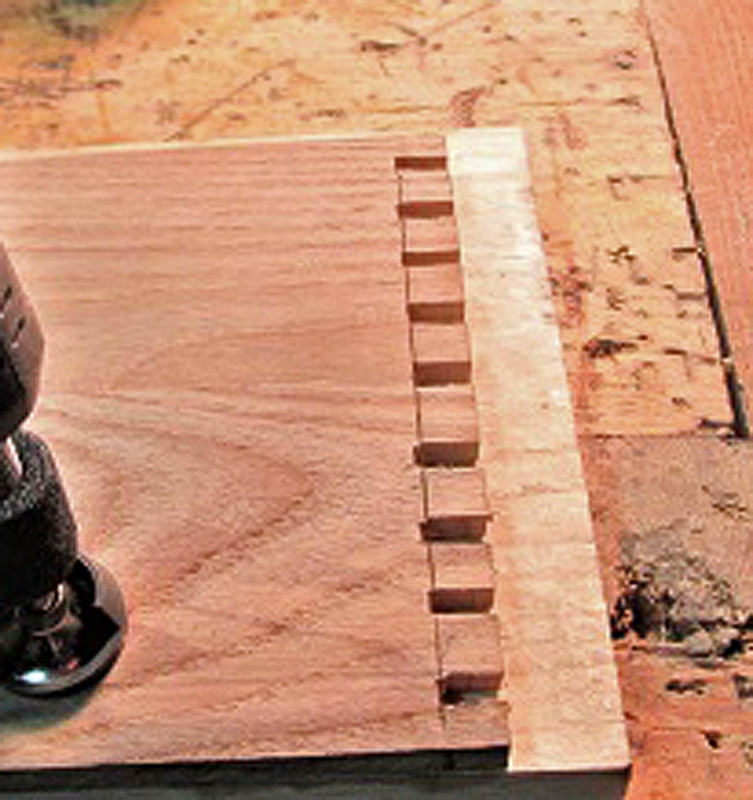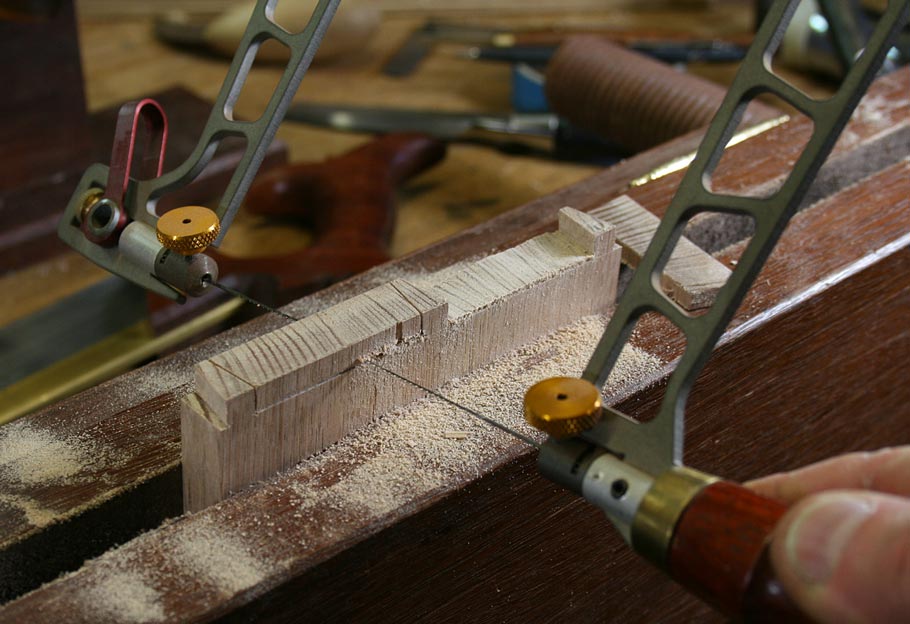For certain, it is much more difficult to tilt if it is wide; as is the board on which i am currently working. The Moxon vise made dovetails much easier to cut for me for a few different reasons. The two primary reasons:
- For me to cut comfortably, the bench is too low. The Moxon vise raises the height.
- The Moxon allows for wide boards. OK, if I had a better (wider) vise on my bench, that would take care of it, but, I do not. In fact, my bench vises are not very wide (less than 24 inches) and there is a screw in the middle and a support thing on each side.
Patrick,
How are you holding your boards? Do you cut out the waste or chisel out the waste? I have heard people say that it takes about the same amount of time for them to chop the waste as to cut out the waste, but I cut it out way faster than I can chop it out. That is probably more a testament to my poor chopping ability than any other reality.
I use a very fine blade to cut out that waste. If it is helpful, I am happy to see what blade I use. When I first started, I was using larger blades (I had no idea they were large, what did I know about it? Almost nothing) so it was very difficult for me to control the cuts. With my current blades, I can drop them directly down into the cuts, rotate the saw a bit, then cut almost straight across; well, as straight as I can cut anyway.
Also, be sure to post a few pictures of your first attempts. I remember my first few, I was lucky if I could cut a single drawer in a couple of nights. I am still nervous when I cut something that will be highly visible, especially when I do it in something like maple or oak, which is not forgiving.





 Reply With Quote
Reply With Quote










